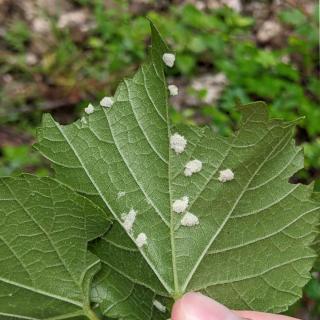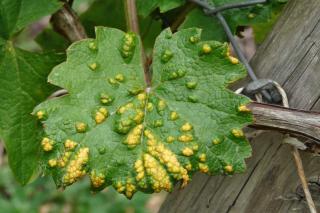

Erineum gall is a disease that is often encountered on trees, but the grape vine also falls victim and the distinctive gall growths appear on the leaves.
Tiny spiders nearly as small as a hair create colonies on leaves and buds of grapevines. This disrupts plant growth, and galls form.
This won’t reduce production, and it won’t change the taste of grapes, either.

These are actually mites and ticks that are invisible to the naked eye. They form colonies on the underside of leaves.
As they sting the plant to feed, it create these galls or blisters.
On the underside, a velvety layer appears that is usually white or pink but can also turn to red brown.
 It isn’t really necessary to treat it because erineum mite disappears on its own and it won’t reduce the harvest in any manner.
It isn’t really necessary to treat it because erineum mite disappears on its own and it won’t reduce the harvest in any manner.